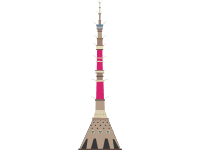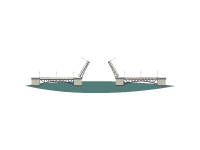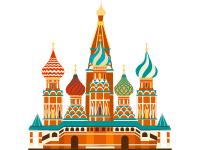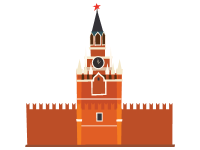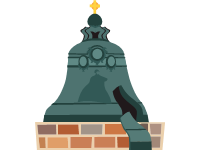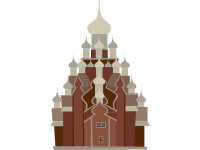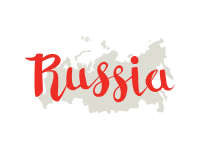The Cathedral of the Annunciation is a Russian Orthodox church dedicated to the Annunciation of the Theotokos. It is located on the southwest side of Cathedral Square of the Moscow Kremlin in Russia, where it connects directly to the main building of the complex of the Grand Kremlin Palace, adjacent to the Palace of Facets. It was originally the personal chapel for the Muscovite tsars, and its abbot remained a personal confessor of the Russian royal family until the early 20th century. Now it also serves as a part of Moscow Kremlin Museums. Compared with the other two major Kremlin cathedrals, the Annunciation Cathedral has slightly smaller dimensions. It is also built in a more traditional style, as it was created by local architects from Pskov, rather than Italian expatriate architects. The most characteristic feature of the building is its nine golden domes, and roof with rich kokoshnik ornamentation in an ogive form.
The Cathedral was built of brick, with facades of white limestone that are dressed and decorated. There are entrances to the cathedral on the eastern and the southern side of the building, with fretwork influenced by Italian Renaissance architecture. The bronze doors are decorated with gold foil. Tourists enter the cathedral via the eastern staircase, while the southern staircase is the one added in 1570 by Ivan the Terrible. The relatively high entrance is due to the fact that the building was built on the raised base of its predecessor. The interior of the cathedral consists of the central prayer area and several surrounding galleries, with the additions of side altars in the 16th century. The northern (facing towards the Palace of Facets) is the first gallery space, which is entered through the visitor entrance. This contains a famous Image of Edessa icon, attributed to the famous Russian icon painter, Simon Ushakov. The gallery is separated by a doorway from the main room, created in the 16th century by Italian architects using a striking azure blue color with gilt floral ornaments. The door wings are decorated with figures of ancient poets and philosophers (including Diogenes, Euripides, Plato and Homer).
The main vault of the cathedral has a large iconostasis, which includes icons of the 14th to 17th centuries, including the ones painted by Andrei Rublev, Theophanes the Greek and Prokhor, and 19th century, as well, particular on the middle tiers. The fifth (lowest) row is pieced by a silver door, behind which is the old staircase to the Tsar’s personal chambers.
Throughout the interior, there are fragments of murals painted by Theodosius (1508) and by others (second half of the 16th, 17th and 19th centuries). These include various biblical themes, heroic figures among other Russian princes and grand dukes.
Example of the murals which decorate the cathedral's ceiling.
Also striking is the altar area of the floor, consisting of sheets of agate yellow-red jasper, which was brought from a cathedral in Rostov Velikiy in the 16th century and which may have originally come from Constantinople.
Behind the altar (where once the sacristy was located) a large silver reliquary containing the remains are of about 50 saints from different places in the Middle East was discovered in 1894.
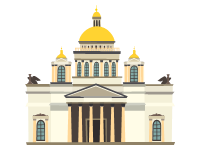
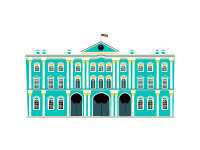

.png)




